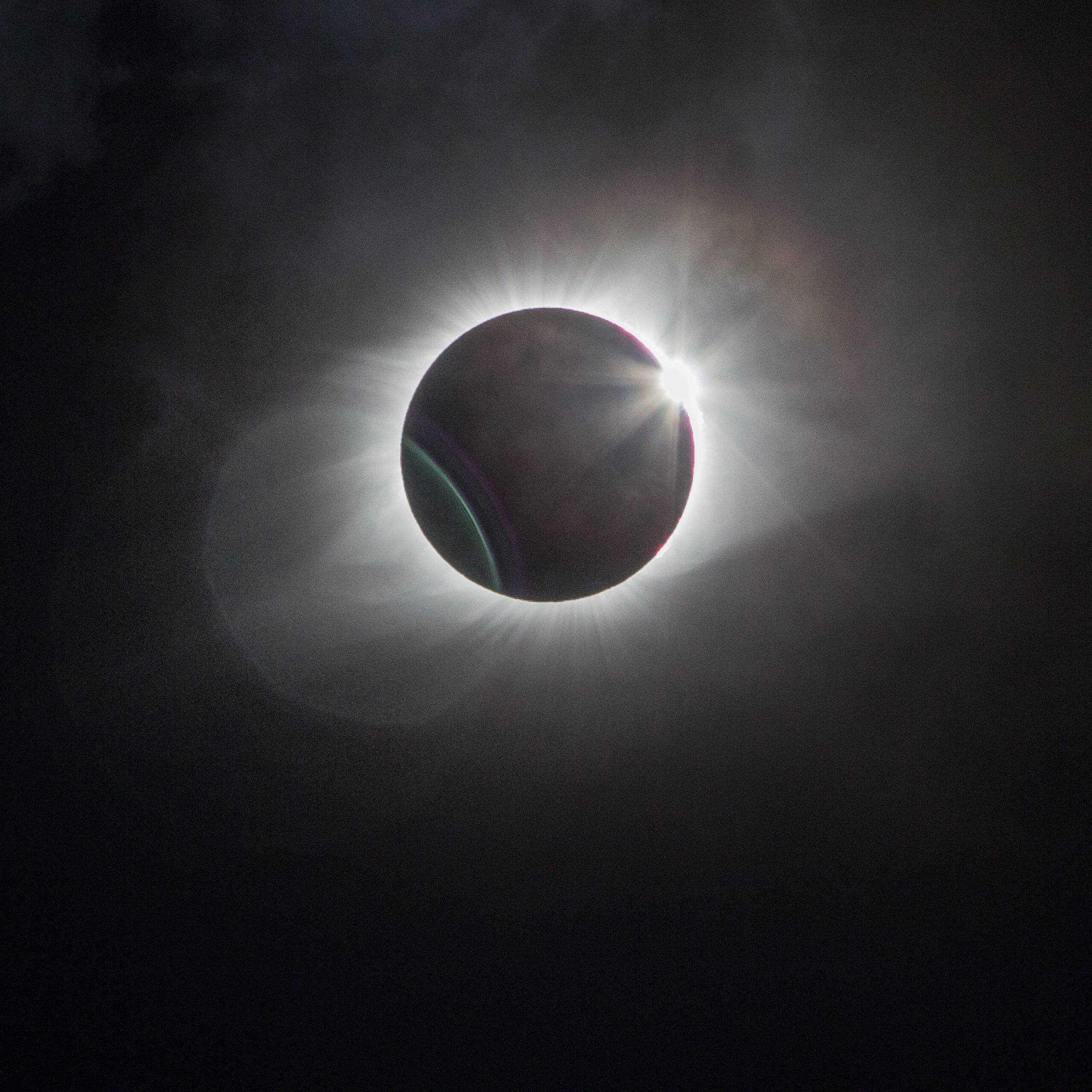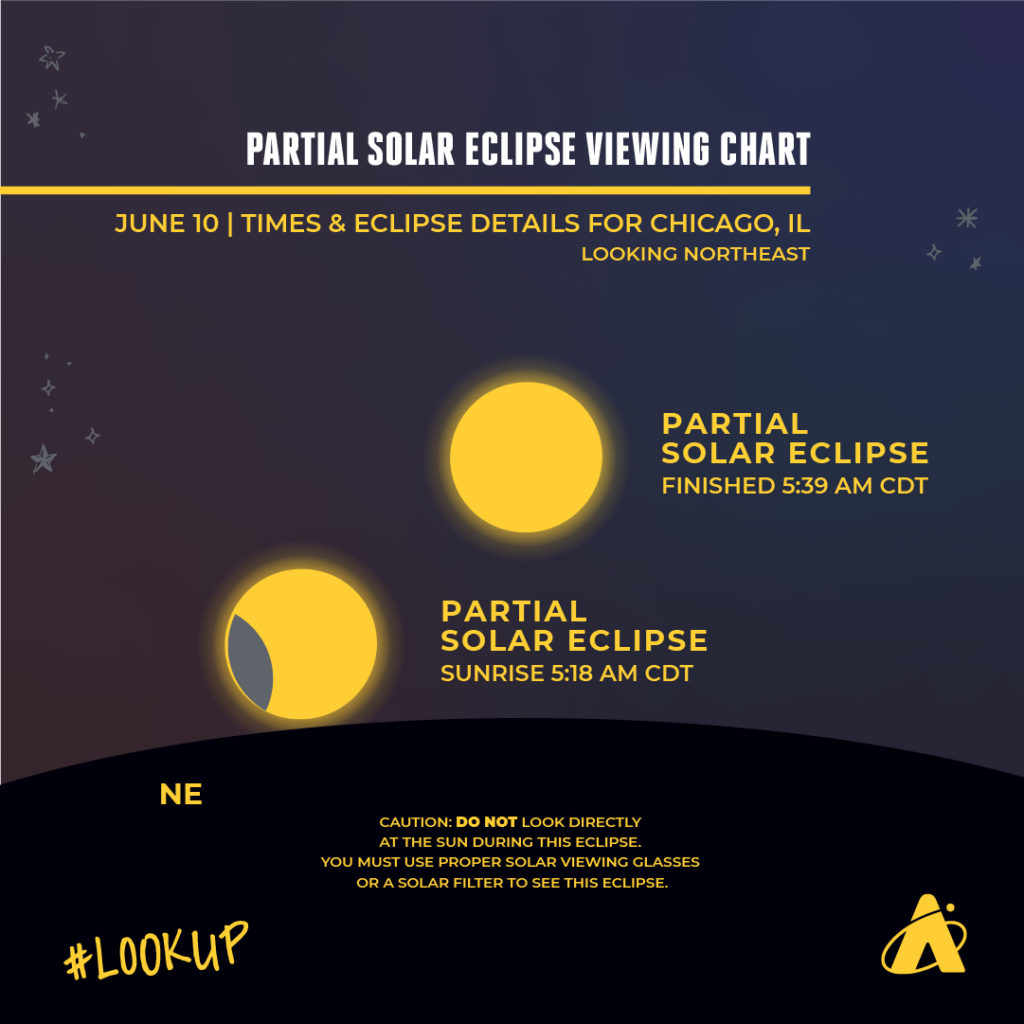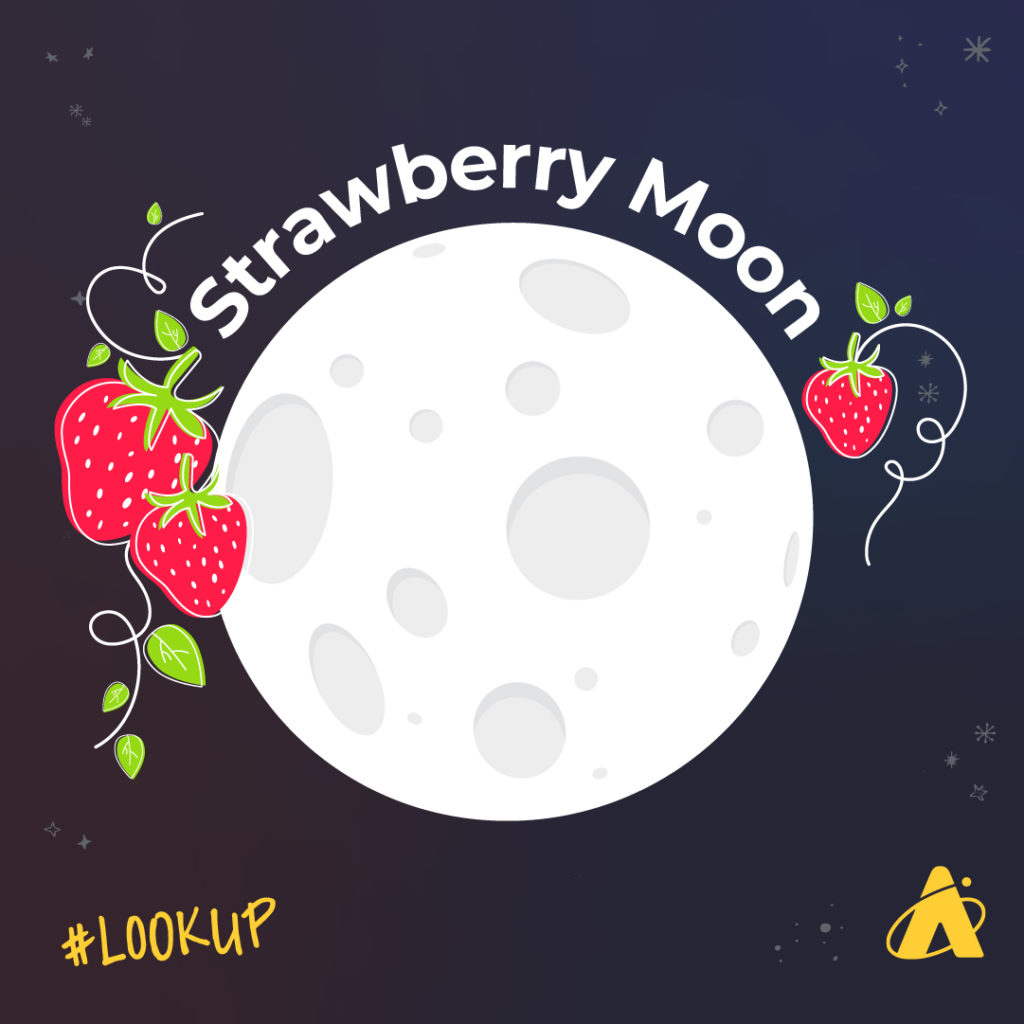Adler Skywatch: June 2021

Header Image: Total solar eclipse from August 21, 2017.
An annular solar eclipse occurs—though it won’t be easy to see—and a new season starts this month, June 2021.
An annular solar eclipse takes place on June 10; and technically, it is visible in the Chicago area. First off, never look directly at the Sun without using a safe solar viewer from a reputable vendor, or permanent eye damage may result. Even with a safe solar viewer, the June 10 annular eclipse is rather minor: when viewed from the Chicago area, the Moon covers less than one-quarter of the Sun. Skywatchers in Northeastern Canada that use proper protective and safety gear will get a much better eclipse view. In Chicagoland the eclipse starts before sunrise, which is 5:15 a.m. CDT on June 10. The eclipse ends for Chicagoans by 5:39 a.m. CDT, when the Sun is less than five degrees above the horizon. The timing makes this eclipse harder to see in Chicago without a clear sight-line down to the east-northeast horizon.

The summer solstice in the northern hemisphere occurs at 10:32 p.m. CDT on June 20. The Sun rises earliest and sets latest for the year around the solstice, and it’s at its highest point in the sky at local-noon. Conversely, you might notice that this month’s Full Moon, occurring four days later, is very low in the night sky. It gets barely 25 degrees above the southern horizon at its highest.
About a half-hour after sunset this month, the planet Mars is low in the western sky. The twin stars Pollux and Castor, in the constellation Gemini, are about ten to twenty degrees to the right of Mars. Early in the month, the brightest planet, Venus, is far below and to the right of Mars, and only about ten degrees above the west-northwest horizon. As the evenings pass, Venus gets higher in the sky and Mars sinks lower, so that by month’s end the two planets appear about seven degrees apart. The evening of June 11, Venus appears near a barely visible waxing crescent Moon, less than two days old. The next evening, June 12, that crescent Moon is more visible and is within a few degrees of Venus, Mars, Pollux, and Castor. And on June 13, the waxing crescent Moon appears just above Mars. Venus sets in the west-northwest by 10:00 p.m. CDT; while Mars sets a little after 11:00 p.m. at the start of the month, but before 10:30 p.m. by month’s end.
The planet Saturn rises in the east-southeast shortly after 1:00 a.m. CDT at the start of the month, and about 11:30 p.m. by month’s end. The much brighter planet Jupiter rises in the east-southeast roughly an hour after Saturn. The waning gibbous Moon is near Jupiter the mornings of June 1 and June 28. Just before dawn, Jupiter and Saturn get about 30 degrees high in the southern sky.
This month the planet Mercury appears so close to the Sun it’s extremely difficult, or impossible, to see.

Last Quarter Moon: June 2
New Moon: June 10
First Quarter Moon: June 17
Full Moon: June 24
Please note that these descriptions are for the Chicago area, using Central time.
Subscribe To Skywatch Wednesday This June
Tour the night sky weekly with the Adler Planetarium’s Theaters Manager Nick, who uses cutting edge visualizations, NASA images, and astrophotography to show you what you can see in the night sky throughout the year.
Learn From Our Astronomy Educators
Watch exclusive live episodes of Sky Observers Hangout this June! In preparation for the upcoming solar eclipse on June 10th, our astronomy educators will explain how solar eclipses happen and how you can safely view this natural phenomena. New episodes air every two weeks on Mondays.






